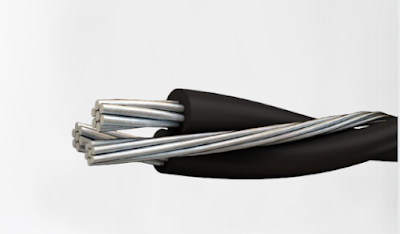What are Fire Rated Cables Made Of?
 |
| Fire Rated Cables |
Introduction:
Fire rated cables play a crucial role in ensuring the safety and reliability of electrical installations. Designed to withstand high temperatures and prevent the spread of fire, these cables are constructed using specialized materials and manufacturing techniques. In this comprehensive guide, we'll delve into the composition of fire rated cables, exploring the materials used and the construction methods employed to enhance their fire resistance and performance.
Understanding Fire Rated Cables:
Fire rated cables, also known as fire-resistant cables or fire-retardant cables, are specifically engineered to maintain circuit integrity and functionality in the event of a fire. Unlike standard cables, which may contribute to the spread of fire and emit toxic gases when exposed to high temperatures, fire rated cables are designed to withstand fire conditions and minimize the risk of electrical failure.
Materials Used in Fire Rated Cables:
1. Insulation Materials:
- Mineral Insulated Cables (MIC): One of the most common types of fire rated cables, MICs consist of copper conductors surrounded by a layer of magnesium oxide (MgO) insulation. MgO offers exceptional fire resistance, thermal stability, and insulation properties, making MICs ideal for high-temperature environments.
- Silicone Rubber: Silicone rubber cables are another popular choice for fire rated applications due to their excellent heat resistance, flexibility, and durability. Silicone rubber insulation can withstand extreme temperatures without compromising performance, making it suitable for critical fire safety applications.
2. Sheath Materials:
- Low Smoke Zero Halogen (LSZH): LSZH sheathing is commonly used in fire rated cables to minimize the release of toxic gases and smoke in the event of a fire. LSZH materials contain no halogen compounds, which reduces the risk of harm to occupants and emergency responders during a fire.
- Polyvinyl Chloride (PVC): While PVC is not inherently fire resistant, PVC-sheathed fire rated cables are often treated with fire-retardant additives to enhance their fire resistance. PVC-sheathed cables are cost-effective and widely used in various applications, but they may emit toxic gases when exposed to fire.
Construction Methods:
- Mineral Insulation: In mineral insulated cables, the conductors are surrounded by a layer of magnesium oxide powder, which is compacted and encased in a metal sheath. This construction provides excellent mechanical strength, thermal stability, and fire resistance, making MICs suitable for harsh environments and critical applications.
- Layered Construction: Some fire rated cables feature a layered construction with multiple insulation and sheathing layers to enhance fire resistance and durability. For example, cables may incorporate a layer of fire-resistant silicone rubber insulation followed by an LSZH outer sheath to provide both thermal protection and low smoke emissions.
- Braiding and Armoring: Fire rated cables may also be equipped with additional protective features such as braiding or armoring to enhance mechanical strength and resistance to external hazards. Braided or armored cables are commonly used in industrial and hazardous environments where mechanical protection is essential.
Conclusion:
In conclusion, fire rated cables are essential components of fire safety systems, providing critical protection against electrical failure and fire propagation. By understanding the materials used and construction methods employed in fire rated cables, businesses and homeowners can make informed decisions when selecting cables for their applications. Whether it's mineral insulated cables for high-temperature environments or silicone rubber cables for flexibility and durability, there are various options available to meet the diverse needs of different industries and applications. As fire safety regulations continue to evolve, the demand for reliable and high-performance fire rated cables is expected to increase, driving innovation and advancements in cable technology.



Comments
Post a Comment